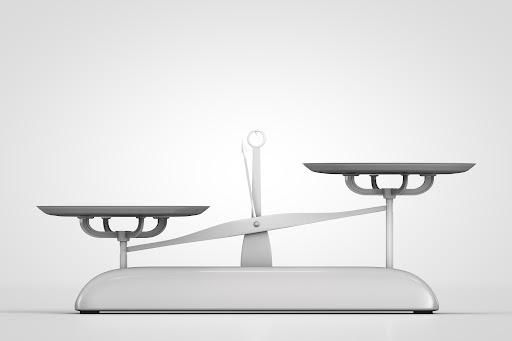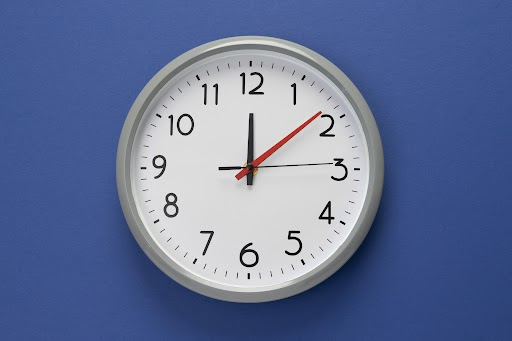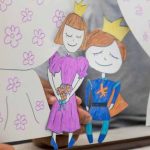For years, man has been in search of one quality. The same quality, helps us measure the goodness of things. That being said, man’s quest to measure quantity, is not far behind. To gain a measure of the quantity of things, one must first understand what a Standard Unit of Measurement is. In layman’s terms, a standard unit of measurement is what aids us in assessing the Magnitude of quantity. It does this, by associating the object with the said measurement.
Children learn about measurement at a young age by doing simple comparisons between objects. For instance, in the question, “Which one is shorter? Greater height? More extended? Bigger? By the time they learn to speak children start discovering that there are multiple ways to quantify an object’s properties. Compared to a feather, which would be lighter and maybe larger, a rock can be both smaller and heavier. These are the questions that your child starts pondering as they start interacting with nature.
What Is Measurement?
In a nutshell, Measurement is a system used to measure things like the height, weight, and even, amount of certain objects. It is through measurement that we can find answers to questions like, ‘How tall is this Giraffe?’
Just like we touched upon in the Introduction, we need to use a standard unit of measurement, to help us express a Physical Quantity. A classic example of this would be employing the use of ‘Inches’ while measuring the length of something. Like say, a Matchbox.
Since we make effective use of these ‘Units’ when it comes to measuring things, it becomes essential that we use the same units of measurement, when Comparing different things.
Why Should You Learn Measurement?
By learning measurement, children can accurately and consistently characterise the environment they live and work in. They can differentiate between differences in sizes, distances, temperatures, and more even before they are taught how to measure in standard units, such as inches on a ruler.
A useful strategy to assist kids in comprehending various dimensions is to introduce them to measurement vocabulary. Encourage kids to use adjectives like tall, short, big, little, warm, cool, far, close, and more to describe people, things, or locations. Children will be able to compare (“taller than me”) and eventually utilise conventional units of measurement (“this weighs 2 kgs”) as their measurement skills advance.
In this blog piece, you will find yourself privy to all things Measurement-related. You will gain a basic understanding of Measurement Types, as well as an insight into Units of Measurement for Kids.
Types Of Measurement
Now that we have answered the question, ‘What is Measurement’, let’s understand it a little better. Depending on what we are looking to quantify, there are different measurement types. Like, the following.
| MetricSystem |
|---|
| Units of Length Conversion Chart |
| 1 meter(m) = 1000 millimeters (mm) |
| 1 meter(m) = 100 centimeters (cm) |
| 1 Kilometer(Km) = 1000 meters (m) |
| 1 decimeter (dm) = 1/10 meter (m) |
| Units of Weight Conversion Chart |
| 1 gram(g) = 1000 milligrams (mg) |
| 1 Kilogram(Km) = 1000 grams (g) |
| Units of Time Conversion Chart |
| 1 Hour(Hr) = 60 Minutes(Min) |
| 1 Minute(Min) = 1 Second (Sec) |
1. Length
One of the most common measurement types, and this one can be loosely defined as ‘The distance of an object from one end to the other.’
A classic example of length measurement would be using a ruler. We begin by placing the zero mark of the ruler, at one end of the object. The item being measured is kept parallel to the edge of the ruler. The length of the object is ascertained by recording the reading on the ruler that marks the end of the object’s other side.

Units – Meter, Millimeter, Kilometer
Use – To measure the distance between two points or objects
Instrument – Ruler, Measuring Tape, Stadiometer(for Height)
Example – Length of a Book.

2. Weight
Undoubtedly, the one thing that we want to measure, more than anything. Needless to say, our ‘own’ weight, especially when we are trying to ‘lose’ weight!
In scientific terms, the weight of an object is the force exerted on it by gravity. Simply put, weight is the measure of how ‘Bulky’ an object is. Of course, we don’t quite wish to know how bulky ‘we’ might be ourselves, but there are plenty of other things whose weight we need to measure. Like, our bags when we are travelling.

Units – Gram, MilliGram, KiloGram
Use – To know how heavy an object is
Instrument – Weighing machine.
Example – Weight of 6 apples.

3. Time
While time might be not so clearly defined, it is the one thing that we are all looking to measure at some point or the other. Simply because the time that is spent will never come back again!
One way we can describe time is the flow of events from the past to the present and subsequently, into the future.

Units – Second, Minute, Hour
Use – To measure the duration between two events
Instrument – Clock
Example – Time taken between breakfast and Lunch
4. Temperature
The hotness or coldness of an object can be determined by its temperature. We use different units like Celsius, Fahrenheit, and Kelvin to measure temperature. To measure temperature accurately, we rely on a device called a thermometer. In the United States, Fahrenheit is the most commonly used unit for temperature measurement.
Units – Celsius, Fahrenheit
Use – To know the level of hotness or coldness of an object
Instrument – Thermometer
Example – Temperature of your body.

5. Capacity
The ability to hold or store. This metric is in general used to measure the liquids.
Units – Milliliter, Liter
Use – To measure the quantity a container can hold
Instrument – Measuring Flask
Example – Capacity of your Water bottle.
There are two types of Measuring System used widely:-
a. Imperial System
b. Metric System
What Are The Units Of Measurement?
In the olden days, people had to invent their own ‘Standard Units of Measurement’, in an attempt to measure the things around them.
When teaching Units of Measurement for Kids, we must understand some of the most common measurement systems that are widely employed in today’s day and age.
There are two types of Measuring System used widely
a. Imperial System
b. Metric System
1. Metric System
When it comes to measuring systems, this one is the most commonly used. Right from their earliest school lessons, children learn how to use metric units. These are commonly used in measuring things like Mass, Length, and even Time. It’s high time we take a look at some Standard Units of Measurement, that form an intrinsic part of the metric system of measurement:
| Capacity Pint Gallon |
| Length Inch (In) Foot (ft) Yard (yd) Mile (mi) |
| Mass Ounces (oz) Stones (st) Pounds (lbs) |
2. The Imperial System
| Capacity Milliliters (ml) Liters (l) |
| Length Millimeters (mm) Centimeters (cm) Meters(m) Kilometers (km) |
| Mass Grams (g) Kilograms (kg) Tonnes (t) |
| Time Seconds Minutes Hours Days, Weeks, Months, Years |
| Temperature Degrees Celsius |
What Are The Different Scales Of Measurement?
The term ‘Measuring Scale’ is indeed a broad one. It can be used to refer to the scale you step on in the morning, fervently hoping you’ve lost a kilo since last evening. It might be that ‘ruler’ we touched upon earlier, to measure the length of an object.
Or, it could be the different Scales of measurement that the data being measured might fall into.
1. Nominal Scale
Here, the numbers serve as a ‘tag’, in an attempt to classify objects.
Example: When answering the question, What is your Gender?
The options given are
– Male
– Female
In this instance, the answer is either M or F.
2. Ordinal Scale
In this, the data that is collected is ordered and ranked, without establishing the degree of variation between them.
Example: In determining the frequency of how often you eat out.
– Very often
– Often
– Not often
– Not at all
3. Interval Scale
In this, the difference between two variables of measurement, has some Meaning.
Note: This is the preferred scale in Statistics, as it helps to assign any numerical value to arbitrary assessments like ‘Feelings.’
Example:
– Likert Scale
– Bipolar Matrix Table
4. Ratio Scale
This quantitative scale helps researchers compare ‘Differences’ or ’Intervals.’
Example: In answering the one question you don’t wish to answer.
What is your Weight?
– Less than 70 kgs
– 70- 85 kg
– 86-100 kgs
– More than 100 kgs
We at EuroKids believe that you should start teaching the children about Measurement. The best part is that it’s easy and fun to incorporate measuring activities into the daily lives of children.
For informative and accurate articles on all things related to your new born-toddler’s development, growth, health and nutrition, follow EuroKids Blogs and do check out our nationally recognized preschools – EuroKids for the first step in your kid’s educational journey!

















